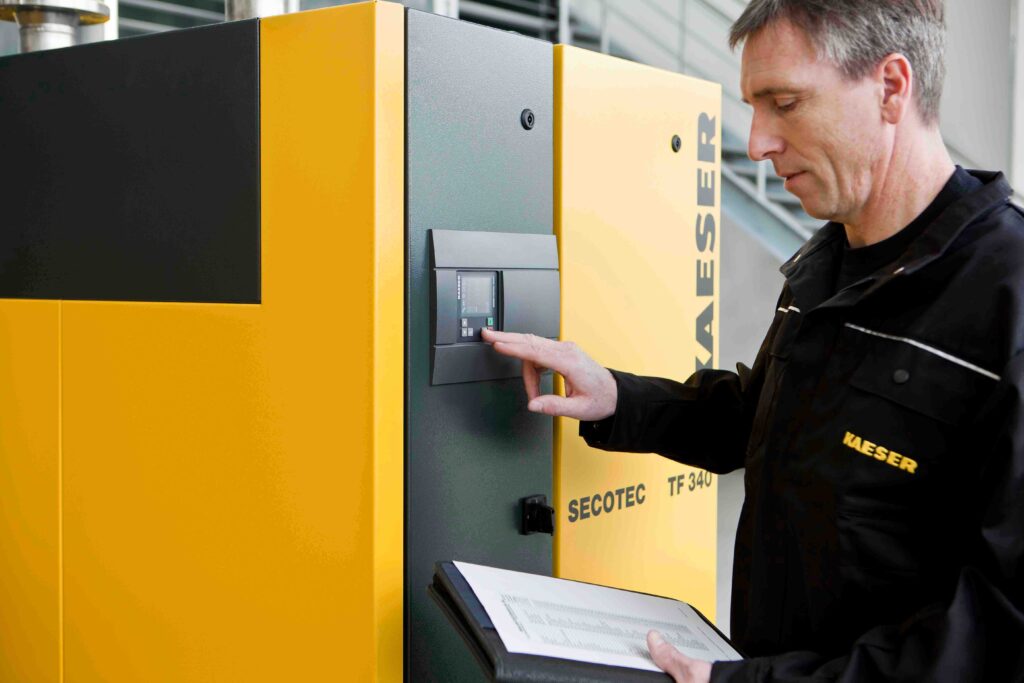When Kaeser Kompressoren started on a journey to improve its data quality, little did it know that artificial intelligence (AI) would become a major game-changer for its business.
With a workforce of around 8,000 and a global sales and services organization operating in more than 140 countries, Kaeser is one of the world’s leading manufacturers and providers of compressed air solutions and services.
Based in Coburg, Germany, Kaeser considers itself both a pioneer in its industry and an innovator: the family-owned firm was one of the first to purchase SAP R/3 when it went to market over 30 years ago and currently has several SAP software projects running simultaneously. It recently reached another major transformation milestone when it migrated to RISE with SAP S/4HANA Cloud.
But the company’s digitization efforts were hampered by growing system complexity and a data volume that it was struggling to manage. “Poor data quality almost always held our projects back,” Kaeser CIO Falko Lameter says.
That’s why the company kicked off a three-year project in 2020 aimed at designing and implementing a new data strategy. Together with SAP, Kaeser wanted to improve data quality and optimize its core business processes.
“AI was on our radar screen back then, but it wasn’t our starting point,” recalls Dr. Norbert Enge, chief business consultant, SAP Business Transformation Services. “Our initial aim was to develop a data strategy road map.”
AI Comes into Play
To start, the project team looked at Kaeser’s master data. “Just to give you one example: our system contains a six-digit number of suppliers, at least two-thirds of whom were inactive,” Lameter says. Maintaining that data manually would have involved a disproportionate amount of effort, which is why many companies hesitate to tackle data projects of this size.
Around the same time, business AI was rapidly gaining traction, so the team began to integrate AI into Kaeser’s data strategy.
The result was Predicting Inactive Suppliers, a custom AI use case based on one of the SAP AI Services – the Data Attribute Recommendation service – and SAP Analytics Cloud. This solution has enabled Kaeser to automate more than 80% of its data maintenance tasks, improve data accuracy, and achieve significant productivity gains.
“Given what I know now, I would say that you can’t maintain that amount of data manually – you can only do it with AI,” says Lameter. “The time for AI has come, and I’m convinced that the future will be data driven.”
Visual Spare Parts Search
The team’s main objective was to find AI use cases that would benefit the end customer. One of these scenarios concerns the search for spare parts. Due to the large number of variants of similar items, this was often a difficult and time-consuming task that created significant extra work for service personnel.
But now, Visual Spare Parts Search, a custom AI use case developed in cooperation with nyris, allows Kaeser service technicians to simply take a photo of the needed spare part. The embedded nyris Visual Search AI service uses image recognition to compare uploaded images against the spare parts database and identify the correct asset ID number.
This helps service technicians pinpoint spare parts much more quickly and enables customers to identify spare parts themselves.

Intelligent Product Recommendations
The most promising AI use case is the SAP Intelligent Product Recommendation application, which helps sales employees analyze customer requirements and processes and translate them into accurate product recommendations. Based on natural language prompts, the solution can analyze a customer’s requirements using machine learning and generative AI and recommend the most suitable compressors.
“Making product recommendations is an art,” Enge says. “If you have the technology to make better recommendations, that’s a real lever.”
There’s More to a Successful AI Project Than Tech
Implementing AI technologies is one thing. However, the team found that it’s just as important to get everyone on board and create the right environment. This includes providing employees with the software they need, training them, and discussing the ethical implications of AI.
Having management buy-in and alignment with other teams, such as research and development, marketing, sales, and service, also proved to be key to success. “Ultimately, it’s also about the impact on the people and the community in which you live and work, and I think it’s very important to take this into account,” Lameter says.
It’s at least a pentathlon, Enge says: “Some would say that it’s only a matter of having a good data scientist. That’s certainly a very important point, but you also need to understand business processes and data and, last but not least, you need to address people’s concerns and explain how you arrive at the results.”
Boundless Opportunities
As an IT pioneer, Kaeser was very open to the topic of using AI. “This is part of the company’s DNA,” Enge says. “Right at the very start of the project, we discussed which league we wanted to play in, and it was clear that AI should be part of the toolbox if we wanted to play in the premier league.”
The proportion of SAP Business AI in Kaeser’s data project rose from less than 10% in the first year to over 30% in the third. Today, the team is now 100% focused on SAP Business AI and has developed 12 specific use cases targeted at adding value for customers.
And there is more to come. Kaeser has developed a prototype application with the NVIDIA Omniverse platform for visualizing the intelligent product recommendation process, as SAP CEO Christian Klein demonstrated in his keynote at SAP Sapphire in 2024.
“Get your journey started and you will discover fascinating things,” Enge says. “The progress is huge, and everyone can share in it.”
Photos courtesy of Kaeser



